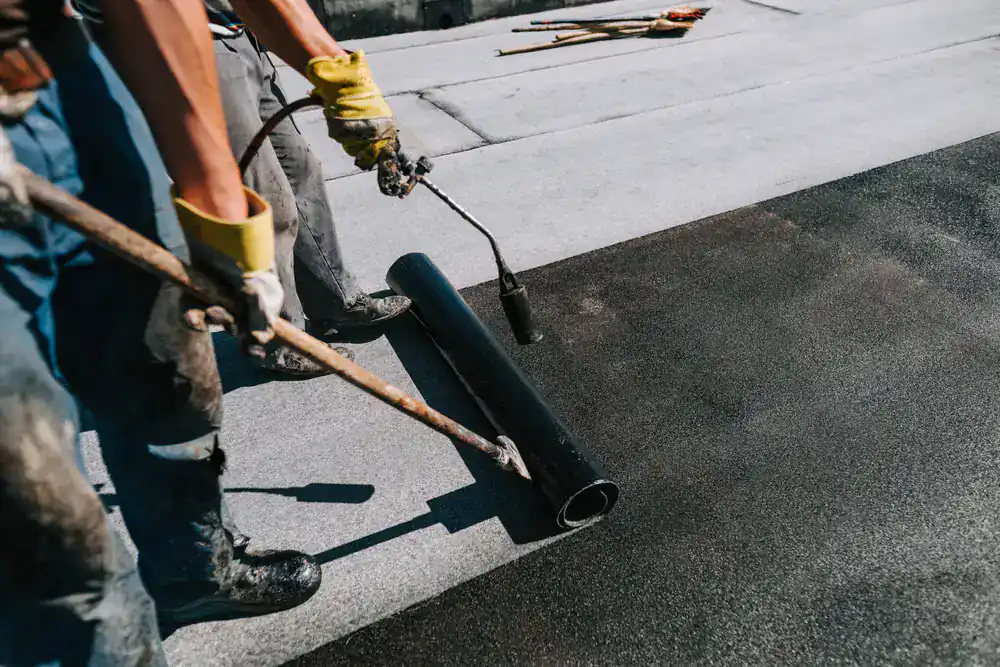
Hear from Our Customers
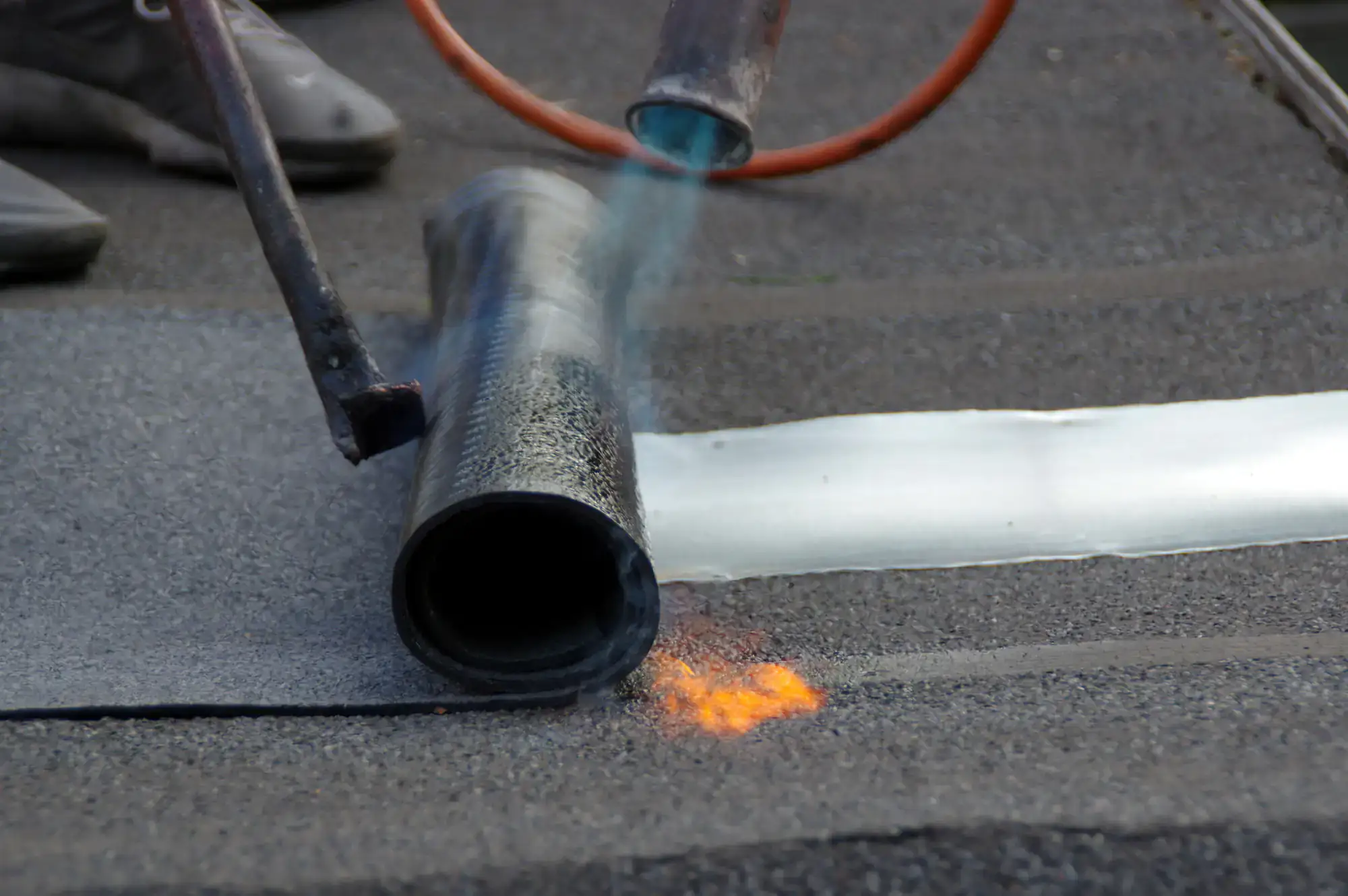
You’re tired of patching the same spots every season. You’re done with water stains on your ceiling and the stress of wondering when the next leak will appear.
Torch down roofing creates a seamless, waterproof membrane that expands and contracts with temperature changes without cracking. The modified bitumen material bonds directly to your roof surface using controlled heat application, forming a seal that actually holds up to Moriches’ heavy rains, snow loads, and coastal winds.
This isn’t another temporary fix. When installed correctly, you’re looking at 20-30 years of protection with minimal maintenance beyond clearing debris and the occasional patch if something sharp hits it.
We’ve been serving Moriches and Long Island homeowners since 2001. We’re family-owned, fully licensed, and insured – not some fly-by-night crew with a torch and a truck.
We’ve seen what happens when torch down gets rushed or done cheap. The blistering, the failed seams, the fire hazards from improper technique. That’s exactly why we take the time to do it right the first time.
Our crews know Long Island’s weather patterns and building codes. We understand that your flat roof sits just feet above sea level here in Moriches, dealing with everything from nor’easters to summer storms that can dump inches of rain in hours.
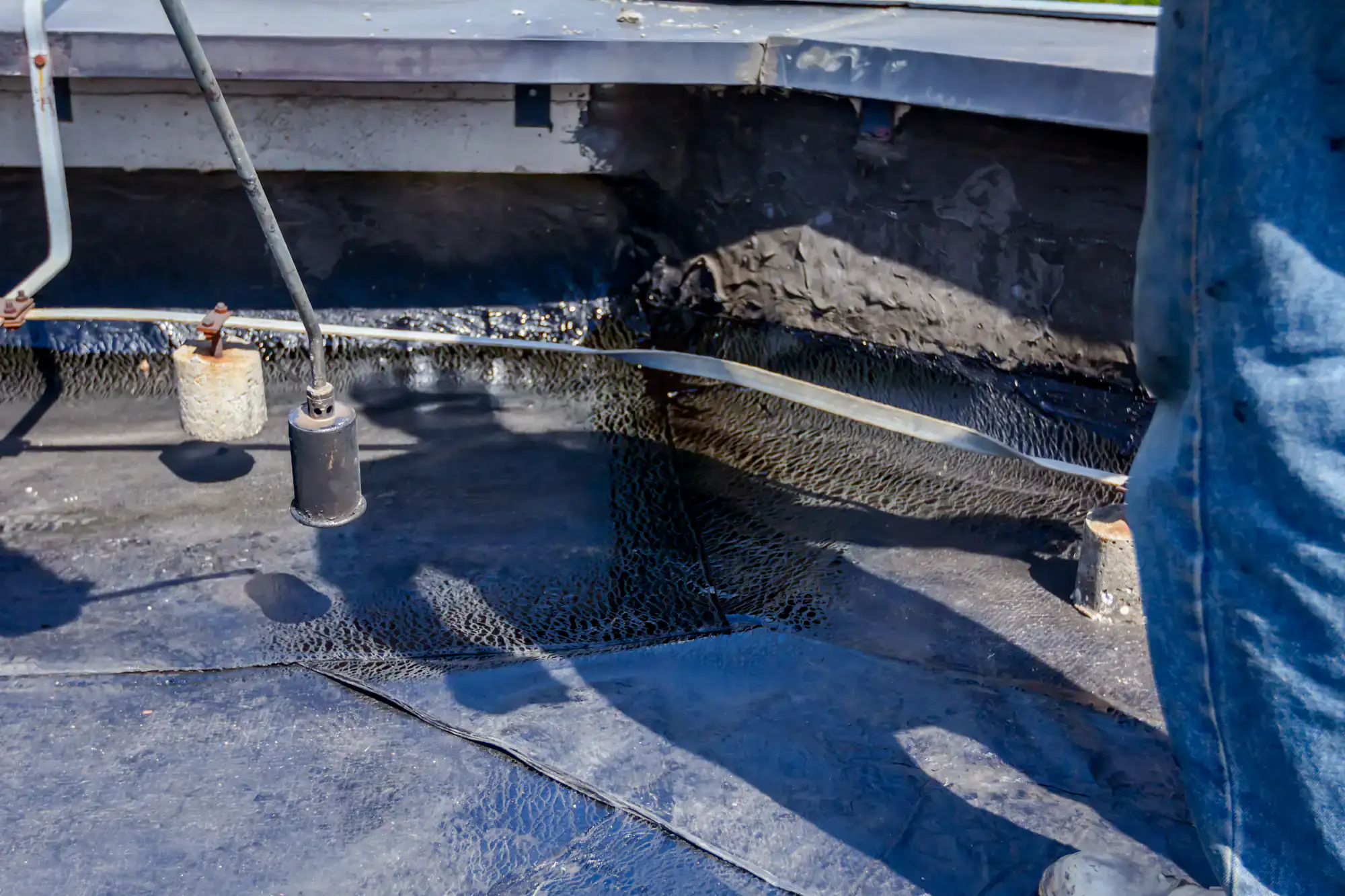
First, we inspect your existing roof structure and determine if we can install over what’s there or if removal is necessary. We prepare the surface, secure metal flashing to roof edges, and apply primer where needed.
Next comes the base sheet – a fiberglass layer that gets mechanically fastened to provide a stable foundation. Then we roll out the modified bitumen membrane, cutting and positioning it to cover every corner and angle properly.
The torch work requires precision. We heat the underside of the membrane to exactly the right temperature – hot enough to create a permanent bond, but not so hot that we damage the material or create a fire hazard. Each seam gets overlapped and sealed, creating one continuous waterproof surface.
The final step is installing the cap sheet with granules for UV protection and energy efficiency. We clean up completely and walk you through what to expect as your new roof settles in.
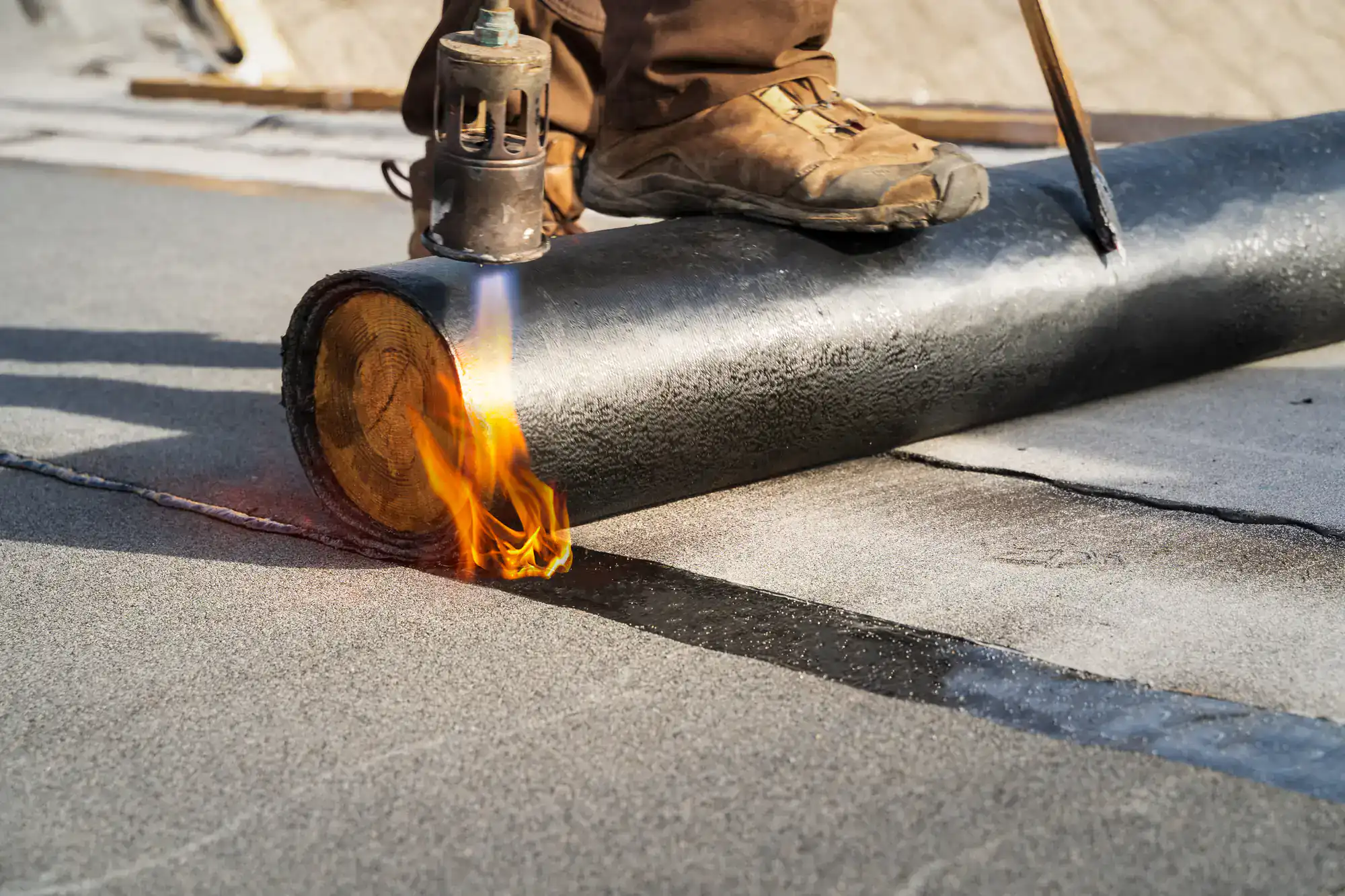
Ready to get started?
We use APP (Atactic Polypropylene) modified bitumen – the plastic-enhanced version that performs best with torch application. This material stays flexible in Moriches’ temperature swings from winter lows in the 20s to summer highs in the 80s.
Your installation includes proper insulation for Long Island’s climate, vapor barrier to prevent condensation issues, and reinforced polyester mat that resists splitting and cracking. The granulated cap sheet reflects heat to keep your building cooler and provides fire resistance.
Given Moriches’ location near the water and low elevation, we pay special attention to drainage details and flashing around any roof penetrations. Standing water is the enemy of any flat roof, but especially critical here where coastal storms can test every seal.
We back our work with a labor warranty against defects and provide maintenance guidance to help you get the full lifespan from your investment.
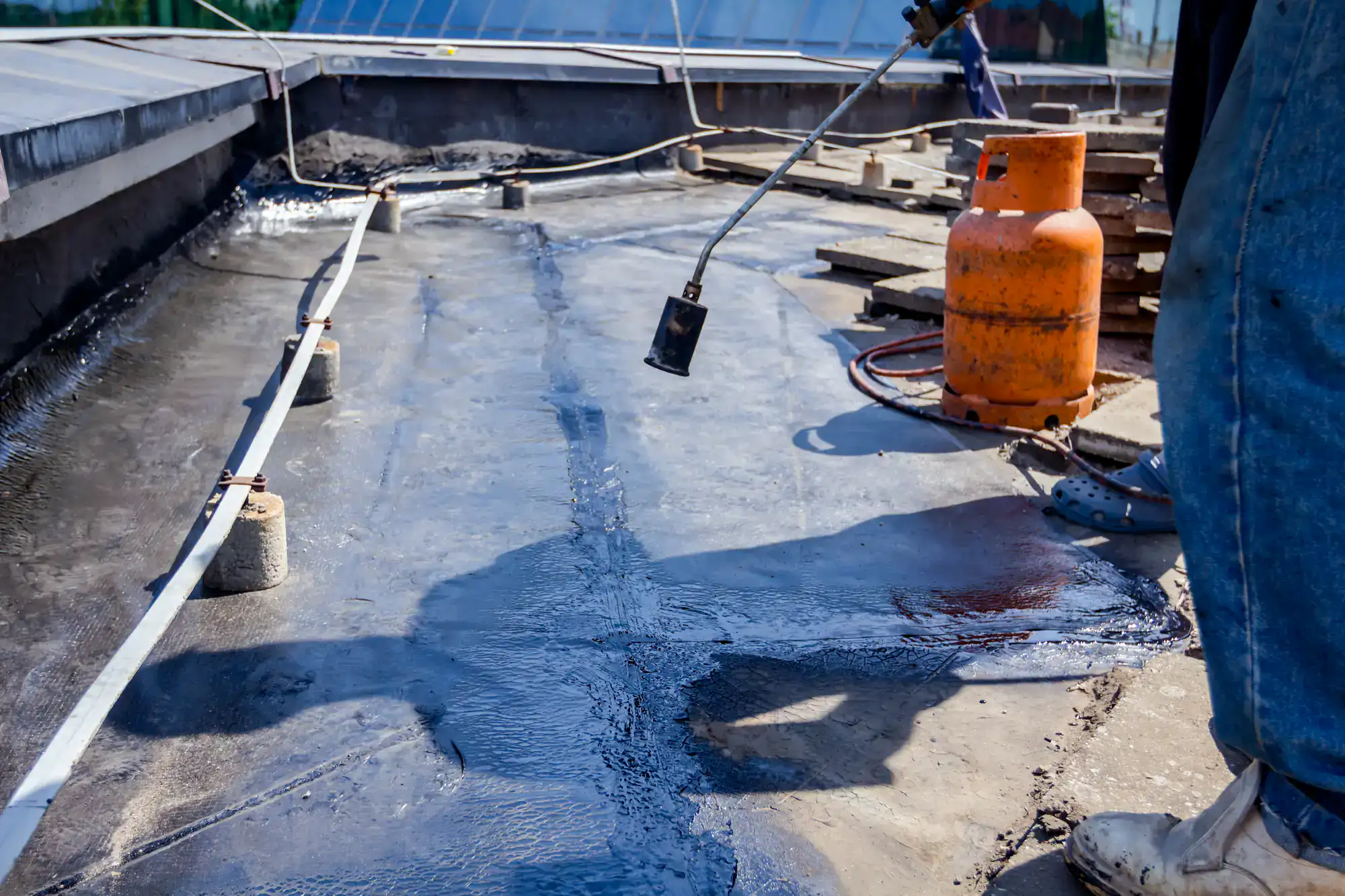
Properly installed torch down roofing typically lasts 20-30 years in Long Island’s climate. The modified bitumen material is specifically designed to handle temperature extremes – it expands under heat and contracts in cold without cracking or losing its seal.
Moriches gets hit with everything from nor’easters dumping heavy snow to summer storms with high winds and driving rain. The torch down membrane’s flexibility and seamless construction handle these conditions better than many alternatives. Regular maintenance like clearing debris and occasional patching extends the lifespan even further.
When installed by trained professionals, torch down roofing is safe. The key is proper technique and safety protocols. We inspect the area for any flammable materials, have fire extinguishers on site, and our crews are trained in proper torch application temperatures.
The biggest risk comes from inexperienced installers who overheat the material or ignore safety procedures. Modified bitumen is actually fire-resistant when properly applied, but it can become flammable if overheated during installation. That’s why this isn’t a DIY project and why choosing an experienced contractor matters.
APP (Atactic Polypropylene) uses plastic modifiers and requires torch application for installation. It creates a more rigid finished surface and performs well in moderate climates like Long Island. SBS (Styrene Butadiene Styrene) uses rubber modifiers and can be installed with torches, cold adhesive, or self-adhering methods.
For torch down applications, APP is typically preferred because it melts at higher temperatures, giving installers better control during the heating process. The plastic modifiers also provide excellent UV resistance, which is important for flat roofs with constant sun exposure. Both types are durable, but APP torch down tends to be the go-to choice for professional installations.
Sometimes, but it depends on the condition of your existing roof and local building codes. We need to inspect the current surface for structural integrity, moisture damage, and how many layers are already there. Most codes limit the total number of roof layers.
If the existing roof is sound and dry, installing torch down over it can save time and disposal costs. However, if there’s water damage, multiple existing layers, or structural issues, complete removal is the better choice. Installing over a compromised surface just traps problems underneath and can lead to premature failure.
Proper drainage is critical for any flat roof, especially in Moriches where coastal storms can dump significant water quickly. We ensure adequate slope toward drains or scuppers, even on “flat” roofs. The torch down membrane itself is completely waterproof when seams are properly sealed.
We pay special attention to flashing around roof penetrations, edges, and transitions. These are the most common failure points on flat roofs. The seamless nature of torch down roofing eliminates many potential leak points, but proper installation technique at details makes the difference between a roof that lasts decades and one that fails in a few years.
Torch down roofing is relatively low maintenance compared to other flat roof systems. The main tasks are clearing debris regularly, especially after storms, and inspecting for any damage from sharp objects or extreme weather. Ponding water should be addressed quickly, though the membrane itself can handle temporary standing water.
Every few years, you might want to apply a reflective coating to enhance UV protection and energy efficiency. Small punctures or tears can be patched with additional membrane material using the same torch application method. The granulated surface helps protect against UV damage, but keeping the roof clean and free of debris extends its life significantly.